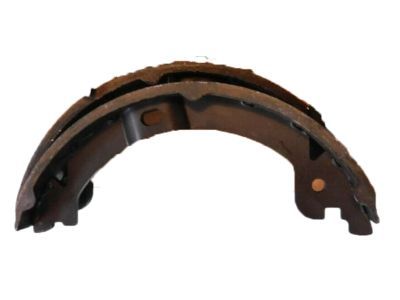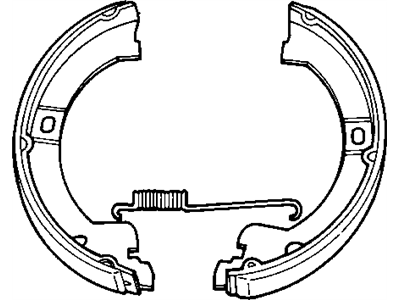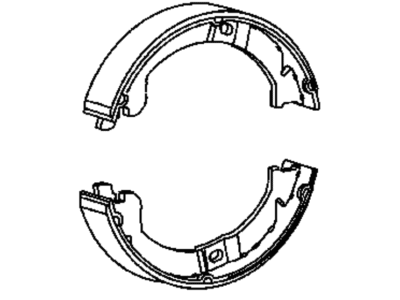
My Garage
My Account
Cart
Genuine Chrysler Town & Country Parking Brake Shoe
Emergency Parking Brake Shoe- Select Vehicle by Model
- Select Vehicle by VIN
Select Vehicle by Model
orMake
Model
Year
Select Vehicle by VIN
For the most accurate results, select vehicle by your VIN (Vehicle Identification Number).
3 Parking Brake Shoes found

Chrysler Town & Country Parking Brake Shoe And Lining Kit
Part Number: 5019802AA$155.89 MSRP: $206.00You Save: $50.11 (25%)Chrysler Town & Country Parking-Rear Brake
Part Number: BHKP7323$25.86 MSRP: $32.91You Save: $7.05 (22%)
Chrysler Town & Country Parking Brake Shoe
Parking brake shoe in Chrysler Town & Country vehicles play the vital role of anchoring the car particularly when the vehicle is stationary. Its fundamental role is to produce a stopping force that jams the wheels with a view of ceasing motion. This is done through the brake lining whose function is to apply pressure against the drum wall to form friction at one instance of engaging the parking brake. For the past few years, Chrysler Town & Country has been having different types of Parking Brake Shoe so as to improve its efficiency and performance. Thus, there is a consistency in the mode of action, in which friction is employed in order to lock the wheels in place, although there may be variations in materials or in details of construction concerning different years of the model. Of course, there may be some variations in the design and structure of the Parking Brake Shoe, having an influence on its efficiency and sturdiness for preserving the optimum level of safety of Chrysler Town & Country vehicles.
Looking for affordable and high-quality auto parts? Then you have already arrived at the proper online shop. We offer all Chrysler Town & Country Parking Brake Shoe at great affordable prices. Moreover, all genuine Chrysler Town & Country Parking Brake Shoe come with a manufacturer's warranty. In the long run, you would realize you have saved a lot of trouble and money with OEM parts from here.
Chrysler Town & Country Parking Brake Shoe Parts Questions & Experts Answers
- Q: How to replace the parking brake shoes on the rear wheels on Chrysler Town & Country?A:Loosen the rear wheel lug nuts, raise the rear of the vehicle, and support it securely on jackstands. Block the front wheels and remove the rear wheels. Release the parking brake. Remove the rear calipers. Support the caliper assemblies with a coat hanger or heavy wire and don't disconnect the Brake Line from the caliper. Remove the rear discs. Remove the rear hub and bearing assemblies. Clean the parking brake assembly with brake system cleaner. Replace the parking brake shoes. Clean the backing plate, then apply a thin coat of high-temperature grease to the shoe contact points on the backing plate. Clean and lubricate the threads of the adjuster screw assembly. Mount the trailing shoe on the backing plate, making sure the notch in the shoe engages with the actuator lever, and secure the shoe with the hold-down spring and pin. Connect the upper return springs to the top of the trailing shoe and to the top of the leading shoe. Place the leading shoe in position and secure the shoe with the hold-down spring and pin. Install the lower return spring. Spread the shoes apart and install the adjuster screw assembly. Inspect the drum surface inside the disc for score marks, deep grooves, hard spots, and cracks. If the disc/drum is worn, scored, or out of round, it will have to be resurfaced by an automotive machine shop or replaced. Install the hub and bearing assemblies. Install the disc/drum over the shoes. Using a screwdriver, turn the star wheel on the parking brake shoe adjuster until the shoes slightly drag as the disc is turned, then back off the adjuster until the shoes don't drag. Install the caliper. Repeat this sequence on the parking brake shoes for the other rear wheel.









